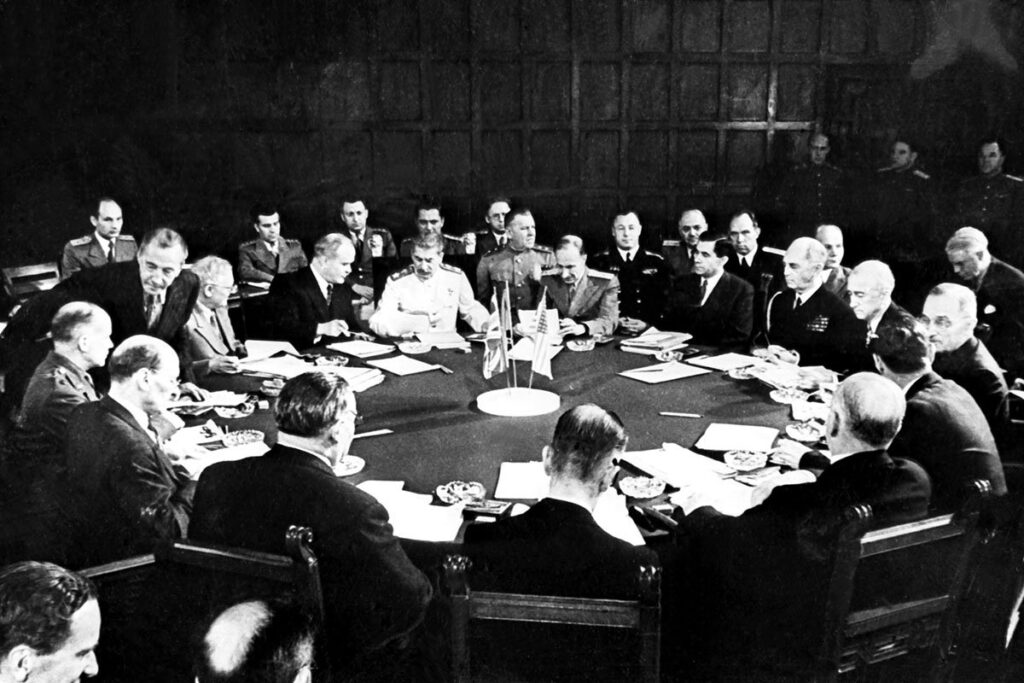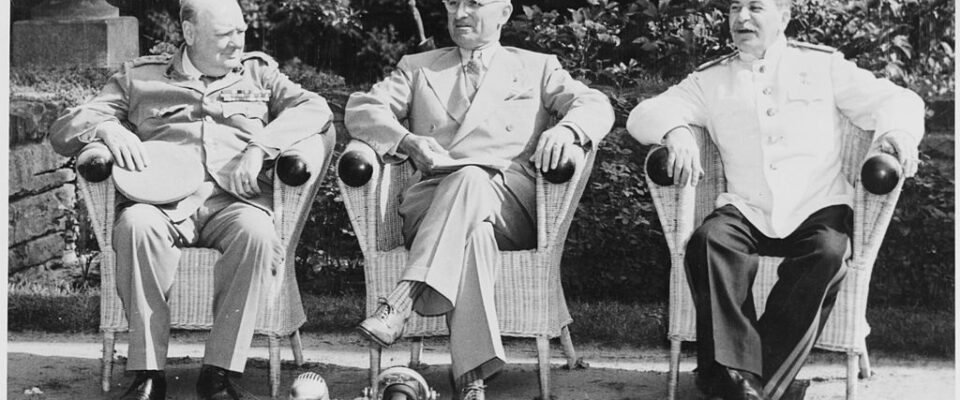From July 17th until August 2nd, 1945, the leaders of the Soviet Union, Great Britain and the United States met at the Allied conference of World War II held at Potsdam in Germany. The Potsdam conference was a defining moment in establishing the new balance of power, post-World War II following the Allied victory.
U.S. President Harry S. Truman, Soviet leader Joseph Stalin and British Prime Minister Winston Churchill (who was replaced on July 26 by Clement Attlee) gathered to discuss the immediate administration of Germany following their unconditional surrender, to solve issues on the peace treaty as well as dealing with the effects of war.
The harmony and good will that significantly characterized prior wartime conferences was not present at Potsdam. Each nation was for themselves, and Churchill was especially suspicious of Stalin’s motives and obstinate stance.
Deciding Germany’s Fate Post-World War II
The determination of Germany’s fate after the war was a very important goal of the conference. According to the U.S. State Department’s record of the event, at the previous Yalta Conference in February 1945, Stalin had pressured Roosevelt to force the Germans to pay postwar reparations with half the payments going to the Soviet Union. Roosevelt agreed, but Truman did not, as he was aware that it was the similar economic retribution inflicted upon Germany post World War I that had led to the rise of Hitler and Nazism. Eventually, the Allies came to an agreement in which the Soviet Union took German industrial machinery from their occupation zone.
The Allied leaders established many details of the postwar order in the Potsdam Agreement that was signed on August 1st. They authorized plans to disarm and demilitarize Germany, which would be split into four Allied occupation zones controlled by Great Britain, the United States, France and the Soviet Union. Additionally, they confirmed plans to significantly reshape German society by abolishing Nazi laws and removing Nazis and Nazism from the German court and education systems as well as arresting Germans who had committed war crimes. The formation of a Council of Foreign Ministers, which would work on behalf of Great Britain, the United States, the Soviet Union and China to create peace treaties with former German allies, was also approved.

Pressuring Japan to Surrender
Another important objective of the Potsdam Conference was to pressure Japan to surrender and exit the war. On July 26th, the United States, Great Britain and China issued the Potsdam Declaration which threatened an enormous land invasion as well as an aerial and naval attack that would “strike the final blows upon Japan,” unless Japan surrendered. The Allies’ non-negotiable terms for peace were reiterated in the declaration and included the unconditional surrender and disarming of Japan’s military, the occupation of Japan “until there is convincing proof that Japan’s war-making power is destroyed”, arrests and trials for Japanese war criminals and the formation of a democratic government system. In exchange, Japan would be able to maintain industries that were not related to war, have access to raw materials and in time, would be allowed to resume international trade. After Japan had rejected this ultimatum, the United States dropped atomic bombs on Hiroshima and Nagasaki.
The conference at Potsdam was the final time that leaders of the United States, Great Britain and the Soviet Union would meet to discuss postwar order.

